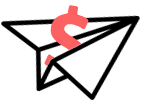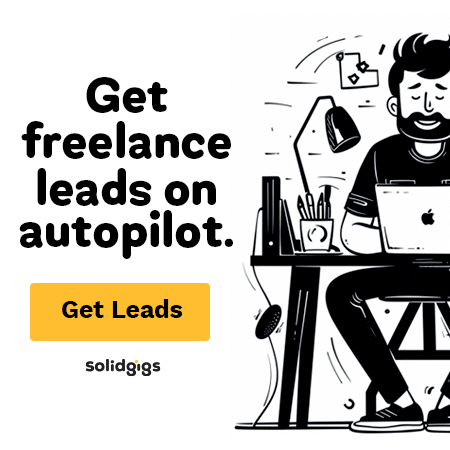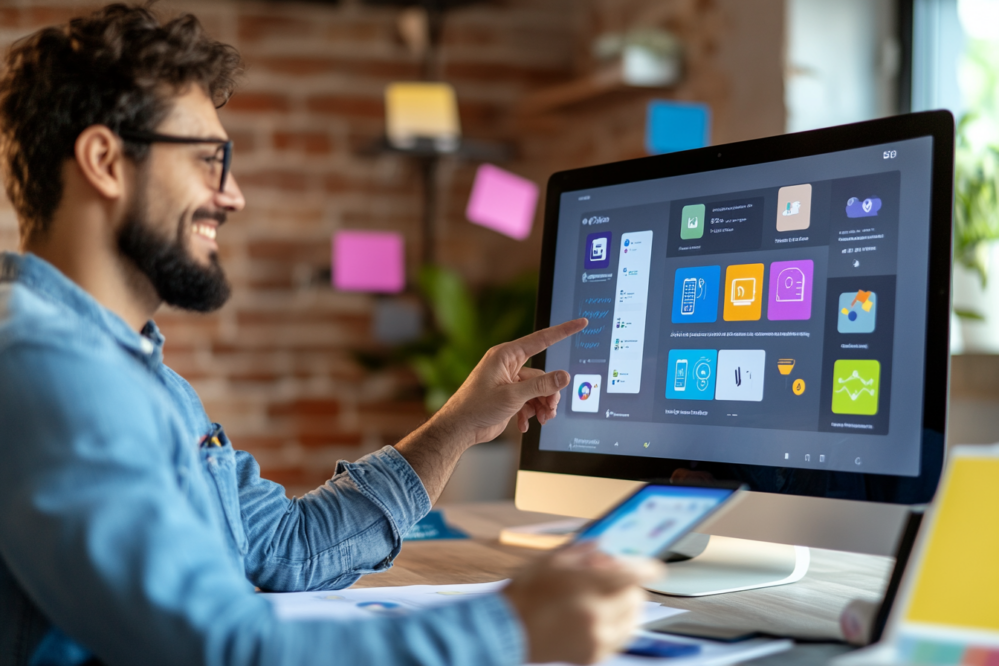Design-driven development (DDD) is not solely about aesthetics, as one might think. It puts the user at the center of the application creation process. The primary purpose is to create a product that will resonate with users at all levels.
Whether you are working on a fitness app or a website for paper writing services, making it functional and beautiful at the same time might pose some challenges. That’s where DDD comes in place.
Design-Driven App Development Fundamentals
Simply put, design-driven mobile app development puts design at the forefront of the whole project. Before this trend emerged, design had been more like an afterthought. When the app’s basis was done, creating a relatively aesthetic interface was the final step. DDD uses the opposite approach—everything starts with design.

Get Weekly Freelance Gigs via Email
Enter your freelancing address and we’ll send you a FREE curated list of freelance jobs in your top category every week.
The shift to DDD started when mobile app development services applied agile project management frameworks instead of classic waterfall ones. In a waterfall development project, the design phase comes at the end stages, when the architecture and functionality of the app are ready.
This approach works but it limits your freedom in creating a user-centric interface. In such a project, the design becomes only a set of colors and shapes to complement the existing functionality. As a result, it loses all of its potential.
This can be compared to painting an existing house. Surely, a nice color will add some beauty to the building, but it will not reshape the structure.
Agile project management allows app development companies and freelancers to have a more iterative process that acknowledges different aspects at the same time. Let’s say you are building a house. With the DDD approach, you’ll start with a clear vision of how you want it to look and why (in terms of functionality). Based on that, you will work on architecture and specific construction solutions.
The DDD approach offers several crucial advantages:
- You can offer an improved user experience. The goal is to understand what users want and how to achieve that.
- As a result of better experience, the application gains more adoption and retention.
- Because of prototyping and the agile approach, the cost of an iOS or Android app development decreases.
- The product better fits the market and target demographics, offering faster growth.
How DDD Works
So, how can a mobile app development company or a freelancer adopt this approach? The first step is understanding the milestones and crucial concepts.
From my experience, here is how DDD works in practice.
User Research
The project starts with understanding the audience and its needs. You can create something that answers users’ interests only through deep and well-executed research. My secret here is to be precise and data-driven.
A freelancer or an app development company can use surveys and interviews to learn more about the pain points users experience with existing apps. You’ll gather raw data that will be a foundation for calling shots. This information allows you to create user personas and journey maps for a future app.
The more specifics and details from real users, the better. These personas and maps should not be fictional. You can create a better user experience only by applying real people’s feedback.
Setting Requirements
The next step is to set app requirements and guidelines. One common mistake is the desire to include all of the discovered data in the app. Unfortunately, it is impossible to create a product that incorporates everything. At this stage, a freelancer or an Android app development agency should prioritize the essentials.
Write down requirements, sort them, and choose your priorities. For an agency, it is important to communicate and collaborate to reach a mutual vision. After that, it is time to create a list of features for future products.
Work on Design
The next step is ideation and working on the actual design. Now, you can work on solutions to incorporate features and user feedback. Designers work in two directions: mockups (architecture and navigation) and wireframes (UI elements like colors, fonts, and buttons).
Mockups create the most efficient ways for a user to use the app. Maps help create the most suitable scenarios, whether the point is to purchase clothing or reserve train tickets.
Wireframes support the vision with pleasing and valuable solutions. Of course, buttons and fonts should be aesthetically pleasing. But they also should be easily understandable and usable. For instance, it is not the best idea if a font is magnificent but hard to read.

Prototypes and Tests
After the mockups and wireframes, an iOS app development company or an individual can start working on prototypes. With interactive prototypes, one can get invaluable user feedback right away. Let people test the prototype and tell how they feel about it.
At this stage, you can uncover many potential issues or new opportunities. Some usability issues might have been missed during the design stage. Alternatively, there might be new business opportunities you haven’t considered yet.
User feedback cannot be overestimated when creating a usable and successful product.
Development
After receiving the testing feedback and potentially implementing new solutions, the team or freelancer starts on the actual development.
The main difference between DDD and other approaches is that development starts later in the project, when designers turn their work over to developers. However, the teams should constantly communicate during the process to ensure a mutual understanding.
App Testing
After developing the app, the testing loop starts. Users work with the app and give feedback. It helps to see how all of that works in the real world.
Finally, the Launch
Of course, the work on the application doesn’t stop with the launch. However, going live is a huge milestone. Testing, strategizing, and improving continue based on new feedback and real-life cases.

DDD Challenges and Potential Issues
Although DDD is a great approach with many benefits, it is not perfect. There are some challenges an Android app development company or individual should be ready to tackle.
Aesthetics VS Function
The main dilemma is finding a balance between beauty and function. There is no ultimate solution, and every team and project solves it differently. For instance, a visual-centered app project might put more emphasis on aesthetics. A clothing shopping application must be pleasing, as it is also part of brand identity and vision.
Alternatively, functionality is more important in tech-related and complex applications with different workflows. For instance, the Google interface is always functional first because creating simple workflows that do not take many steps is crucial.
Another example would be a CRM application. It comes with many complex workflows, and the goal is to reduce unnecessary steps to increase efficiency. Of course, an interface still has to be pleasing, but it is far less crucial here.
The aesthetical approach focuses on

- Colors;
- Animations;
- Whitespace balance;
- Quality of imagery;
- Readable typography;
- Visual consistency;
- Simple layouts.
Functional approach emphasizes
- User testing;
- Usability;
- Accessibility;
- Consistency;
- Adaptability;
- Responsiveness;
- Task efficiency.
To find the right balance, a team or individual freelancer must acknowledge the app’s industry, purpose, and target demographic.
Overcomplicating the Product
Another common problem is adding features until the product becomes unusable or exceeds the budget.
The challenge is easy to understand—a team wants to create a great product and incorporate more features. Yet, sometimes, less is more. It is crucial to stick to a previously set roadmap with features and requirements. Surely, something might be added in the process. But evaluate the potential benefits with the time and finances it will take.
Inconsistent Communication
Miscommunication between teams and departments is a common problem. Every agency or company has to resolve it in its own manner. However, the purpose is the same—to create a collaborative environment where every team member is heard.
One might adopt regular meetings and workshops to foster cross-cultural collaboration. Project updates should be consistent and available to every member of the team so that everyone is on the same page regarding where the product is right now.
Final Thoughts
Design-driven app development is an excellent approach to creating a successful product. It relies heavily on meeting users’ interests and designing the best solution for a specific goal. Although it has some challenges, it effectively achieves a vision where aesthetics is balanced with function.
Keep the conversation going…
Over 10,000 of us are having daily conversations over in our free Facebook group and we’d love to see you there. Join us!

